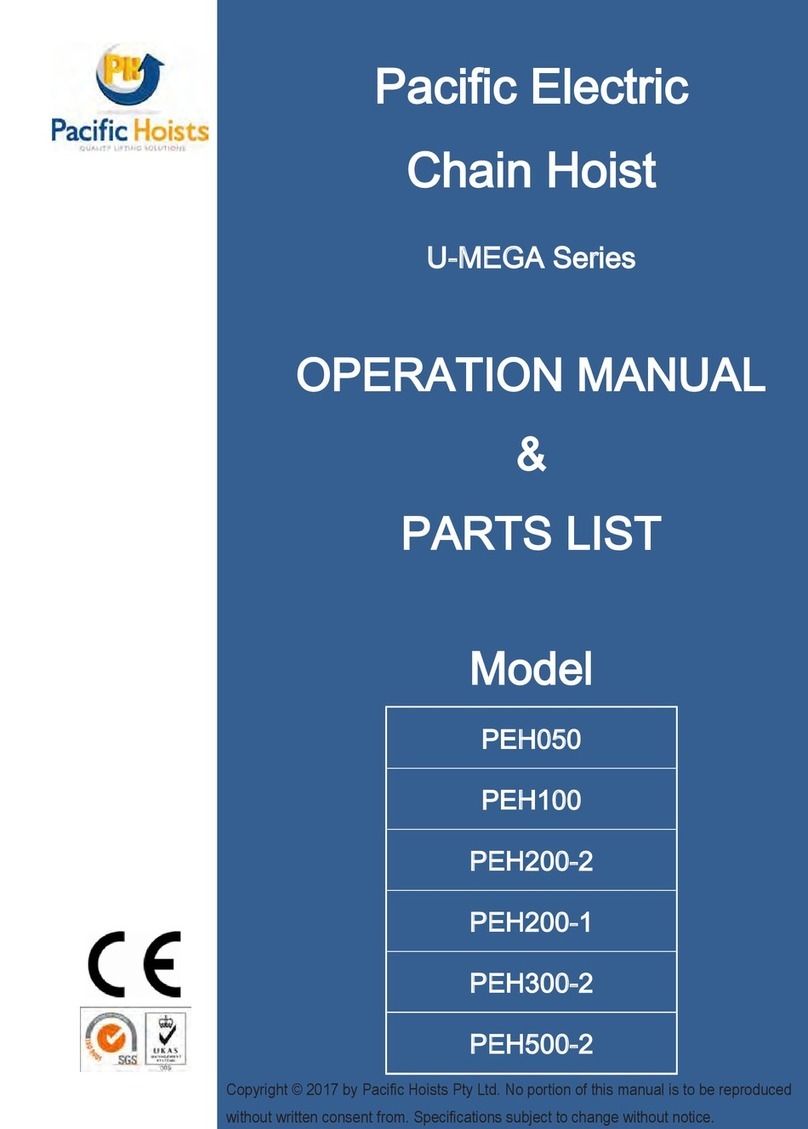
2
CONTENTS
Safety-Important ......................................................................................................................... 1
1.Foreword .................................................................................................................................... 3
2.Main Specification .................................................................................................................... 4
2.1 Specification ........................................................................................................................... 4
2.2 Mechanical Classification (Grade) and Life ....................................................................... 5
2.3 Safety Device .......................................................................................................................... 6
2.4 Specification and Dimensions ............................................................................................. 7
3.Safety Rules ............................................................................................................................... 8
4.Installation ............................................................................................................................... 10
4.1 Unpacking Information ...................................................................................................... 10
4.2 Voltage .................................................................................................................................. 10
4.3 Installation ............................................................................................................................ 11
5.Operation ................................................................................................................................. 12
6.Maintenance and Inspection ................................................................................................ 13
6.1 Maintenance ......................................................................................................................... 13
6.2 Inspection ............................................................................................................................. 13
7.Troubleshooting ..................................................................................................................... 16
7.1 Wiring Diagrams .................................................................................................................. 16
7.2 Troubleshooting and Remedial Action ........................................................................... 18
7.3 Overload clutch adjustment instruction ......................................................................... 19
8.Drawings and Parts ................................................................................................................ 20
9.Declaration Of Conformity .................................................................................................... 32































